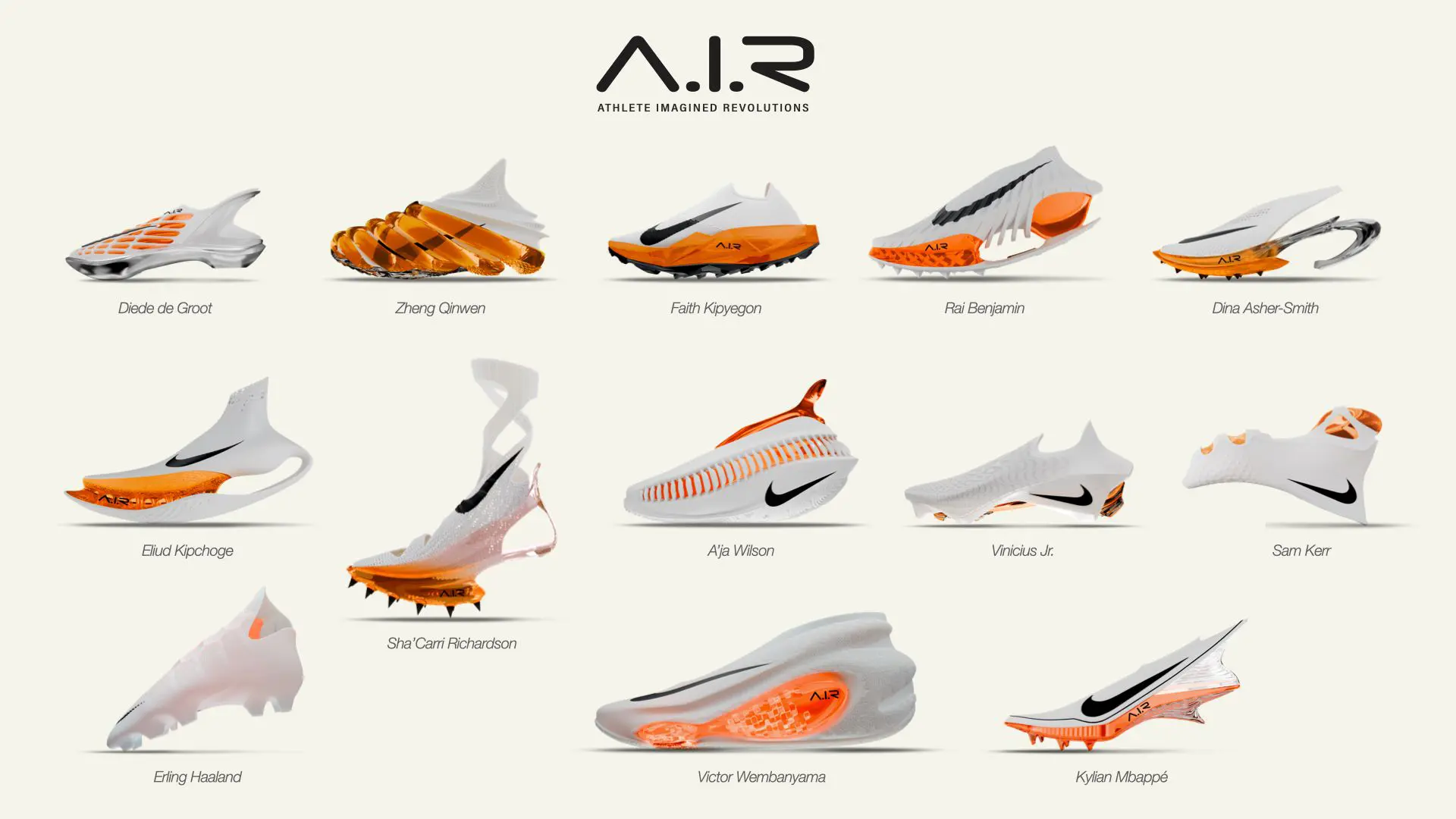Nike’s Olympic Marketing Mastery
In 2012, while Adidas held the official Olympic sponsorship, Nike crafted a masterful campaign that stole the spotlight without direct affiliation.
Adidas invested heavily, but Nike's ingenuity and strategic maneuvers turned the tide in their favor.
This victory was not merely about the immediate gains but also about setting a precedent for future Olympic marketing campaigns, especially with the current Paris 2024 Olympics on the horizon.

Nike's Triumph at the 2012 Olympics: An Emotional Rollercoaster
During the London 2012 Olympics, Adidas, the official sponsor, and the International Olympic Committee (IOC) imposed strict guidelines to protect sponsorship exclusivity.
Official sponsors like Adidas were granted exclusive rights to use Olympic symbols and terms such as "Olympic Games" and "London 2012."
Non-sponsors were prohibited from implying any official association with the Olympics.
It was widely anticipated that Adidas would experience a significant boost in popularity and success as a result of its official sponsorship status.

Despite strict marketing guidelines, during the 2012 London Olympics, a surprising twist unfolded in the world of sports marketing.
Despite not being an official partner, Nike captured the hearts of millions, overshadowing Adidas.
In a survey, 37% of respondents believed Nike was an authorized sponsor, while only 24% recognized Adidas. More strikingly, 54% felt a stronger emotional connection to Nike.

On social media, Nike dominated with over 16,020 tweets associating them with the Olympics, far surpassing Adidas's 9,300.
Nike’s follower count exploded, growing by 11% with over 57,000 new followers, compared to Adidas's modest 4% increase and 12,000 new followers.
This remarkable feat left many in awe, pondering a crucial question: how did they do it?

Creative Way of Location Picking
Restricted from using "London, UK" in their advertising, Nike turned this limitation into an opportunity.
They filmed their commercials in various locations named London around the globe, such as London, Ohio, Little London, Jamaica, and Small London, Nigeria.
This ingenious tactic allowed Nike to create a strong Olympic association without breaking any rules.
Focus on Relatable Ambassadors
In a departure from their usual celebrity-focused ads, Nike embraced a more down-to-earth approach for the 2012 Olympics.
Forbidden from featuring Olympians, Nike chose local teenagers as brand ambassadors.
This move contrasted sharply with Adidas's star-studded campaigns and resonated deeply with everyday people, highlighting personal stories of ambition and determination.

Empowering Athletes with Innovation
During the 2012 Olympics, Nike brilliantly leveraged the freedom athletes had to choose their footwear.
Without being an official Olympic partner, Nike introduced the vibrant VOLT shoes—a bold yellow-green design that stood out on the Olympic tracks.
By offering this innovative and eye-catching footwear to nearly 400 Olympians, Nike creatively ensured maximum visibility.
The striking color of the VOLT shoes symbolized energy and creativity, capturing the attention of both athletes and spectators, and reinforcing Nike’s association with cutting-edge performance and individuality (unlike some of their controversial sneakers).

Evolution of Nike’s Olympic Games Campaigns
The success of Nike's 2012 campaign laid the foundation for their future Olympic advertising strategies.
The brand demonstrated how it could leverage the power of the Olympic movement to enhance its visibility and brand awareness.
For the Paris 2024 Games, Nike plans to build on this legacy, using its past experiences to strike a chord with their audience yet again.

From London 2012 to Paris 2024
Nike's journey from the 2012 London Olympics to the current 2024 Summer Olympics in Paris has been marked by continuous innovation and adaptation.
The lessons learned from their past campaigns have shaped their approach to future Olympic marketing efforts.

Key Lessons from the 2012 Marketing Approach
The key lessons from Nike's 2012 marketing approach include the importance of storytelling, the power of digital and social media, and the effectiveness of focusing on the athletes' personal journeys.
These elements have become integral to Nike's Olympic marketing strategy.

The Impact of the 2012 Olympic Marketing Win on Nike’s Brand
Nike's success in 2012 significantly boosted their brand image, showcasing their ability to compete with and surpass even the official sponsors of the Olympic Games.
This victory solidified Nike's reputation as a marketing powerhouse and set the stage for future campaigns.

Strategic Planning for Paris 2024 Olympics
As Nike gears up for the Paris 2024 Olympic Games, its focus remains on innovation and creativity.
The brand aims to reach a global audience through various channels, including social media and user-generated content.

Nike is pulling out all the stops for the 2024 Paris Olympics, launching an audacious and emotionally charged advertising spree that aims to capture the hearts of millions worldwide.
This campaign, set to be their largest media spend to date, underscores Nike's relentless pursuit of excellence and innovation in the competitive sportswear market.

A Narrative of Determination
At the core of Nike’s campaign for the current Summer Olympic Games is the powerful ad, "Winning Isn’t For Everyone," narrated by the iconic Willem Dafoe.
This gripping narrative delves into the raw and often ruthless drive necessary to reach the pinnacle of success.
Featuring sports legends like LeBron James, Serena Williams, and Giannis Antetokounmpo, the ad juxtaposes Dafoe’s intense monologue with stunning visuals of these athletes pushing their limits.
The emotional weight of the campaign challenges viewers to redefine their understanding of greatness, sparking conversations and debates across the globe.
Blending Technology with Tradition
Nike’s innovative spirit shines through with the introduction of AI-generated sneakers, a fusion of cutting-edge technology and athletic performance.
These sneakers are part of a broader effort that includes unveiling new, futuristic Olympic uniforms designed to captivate and inspire.
By marrying digital advancements with tangible, real-world applications, Nike is not just showcasing products but creating an experience that bridges the virtual and physical realms.
This approach is evident in their planned activations at the Centre Pompidou in Paris, where fans can immerse themselves in the brand’s visionary ethos.

Dominating the Social Media Landscape
Nike’s strategy extends far beyond traditional advertising, leveraging the immense power of social media to amplify their message.
The campaign’s reach is magnified through engaging content and high-profile athlete endorsements, ensuring that Nike’s presence is felt across every platform.
This digital dominance is about more than just visibility; it's about forging a deep, emotional connection with a global audience.
By celebrating the stories of athletes who embody the relentless pursuit of greatness, Nike reinforces its brand identity and cultivates a loyal following.

With these bold and innovative strategies, Nike is set to make an indelible mark on the Paris 2024 Summer Olympics.
The brand’s commitment to pushing the boundaries of sports marketing is not only a testament to their legacy of excellence but also an inspiring call to action for athletes and fans around the world.
Unleashing Brand Potential: How the Olympic and Paralympic Games Drive Global Marketing Success
The Olympics and Paralympics are a remarkable platform for brands to connect with a global audience and enhance their brand awareness.
Every four years, the worldwide Olympic and Paralympic Games captivate millions, creating unique opportunities for brands to leverage the magic of the Games.
Brands like Airbnb, Alibaba, LVMH, and Louis Vuitton have become premium partners, utilizing the Olympic logo and symbols to promote their products and services.
The 2024 Olympic and Paralympic Games in Paris promise to be a gold-medal event for marketing, where brands can host experiences in the Olympic Village, create engaging UGC on platforms like TikTok, and implement innovative strategies to leverage the Olympic spirit.
With the Olympic Games set to be held in a city as iconic as Paris, and the participation of Olympic athletes inspiring the world, brands have a unique chance to design their websites, launch online stores, and tap into streaming platforms to maximize their presence.
The Games are not just a sporting event; they are a global stage where brands can look for opportunities to connect deeply with audiences and promote their brand awareness, from the summer and winter games to the national Olympic committees and beyond.












